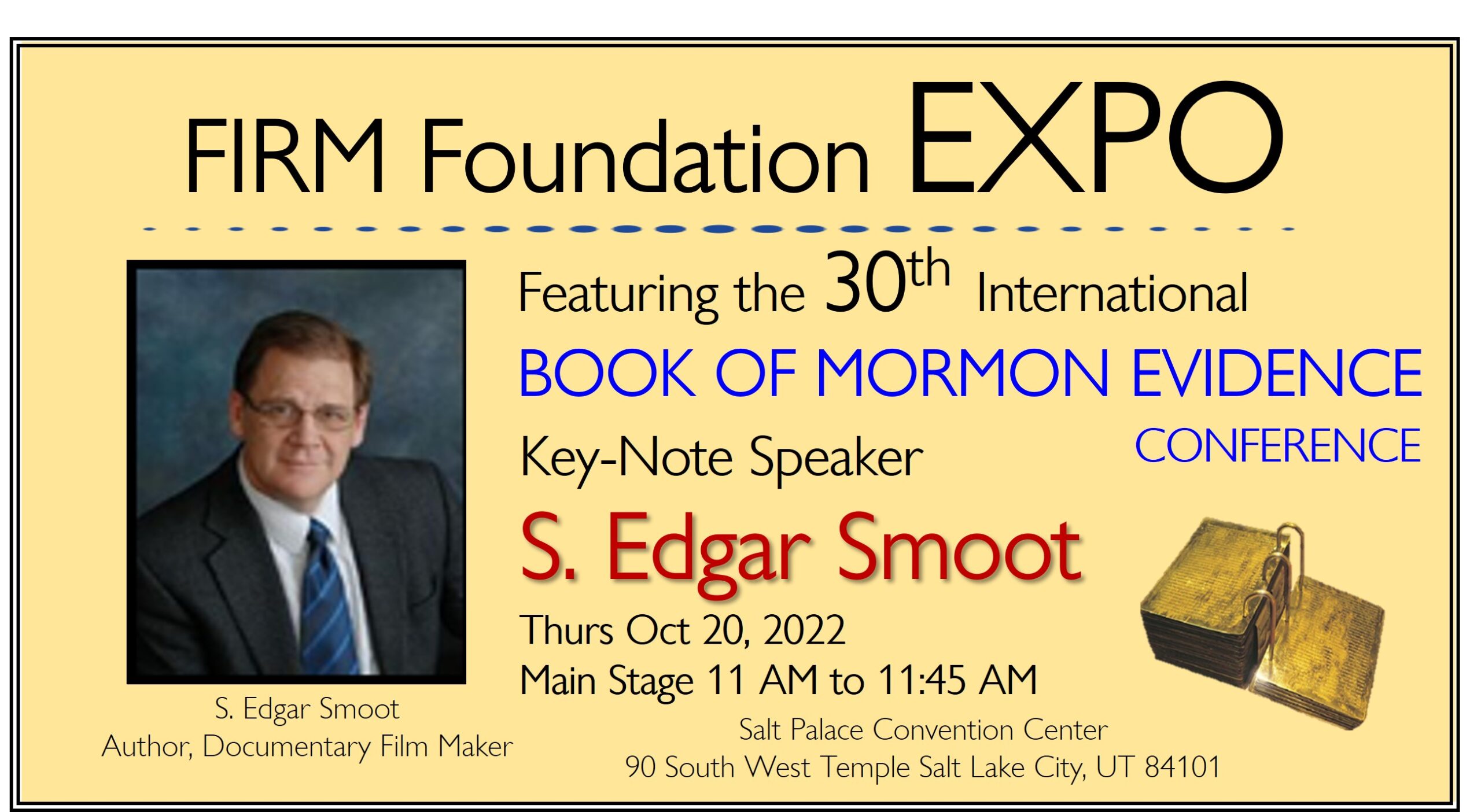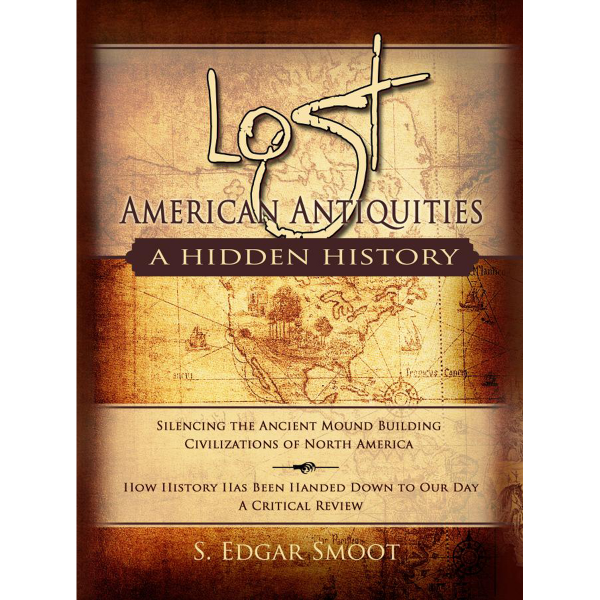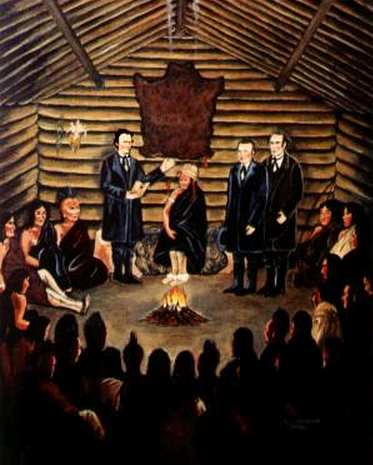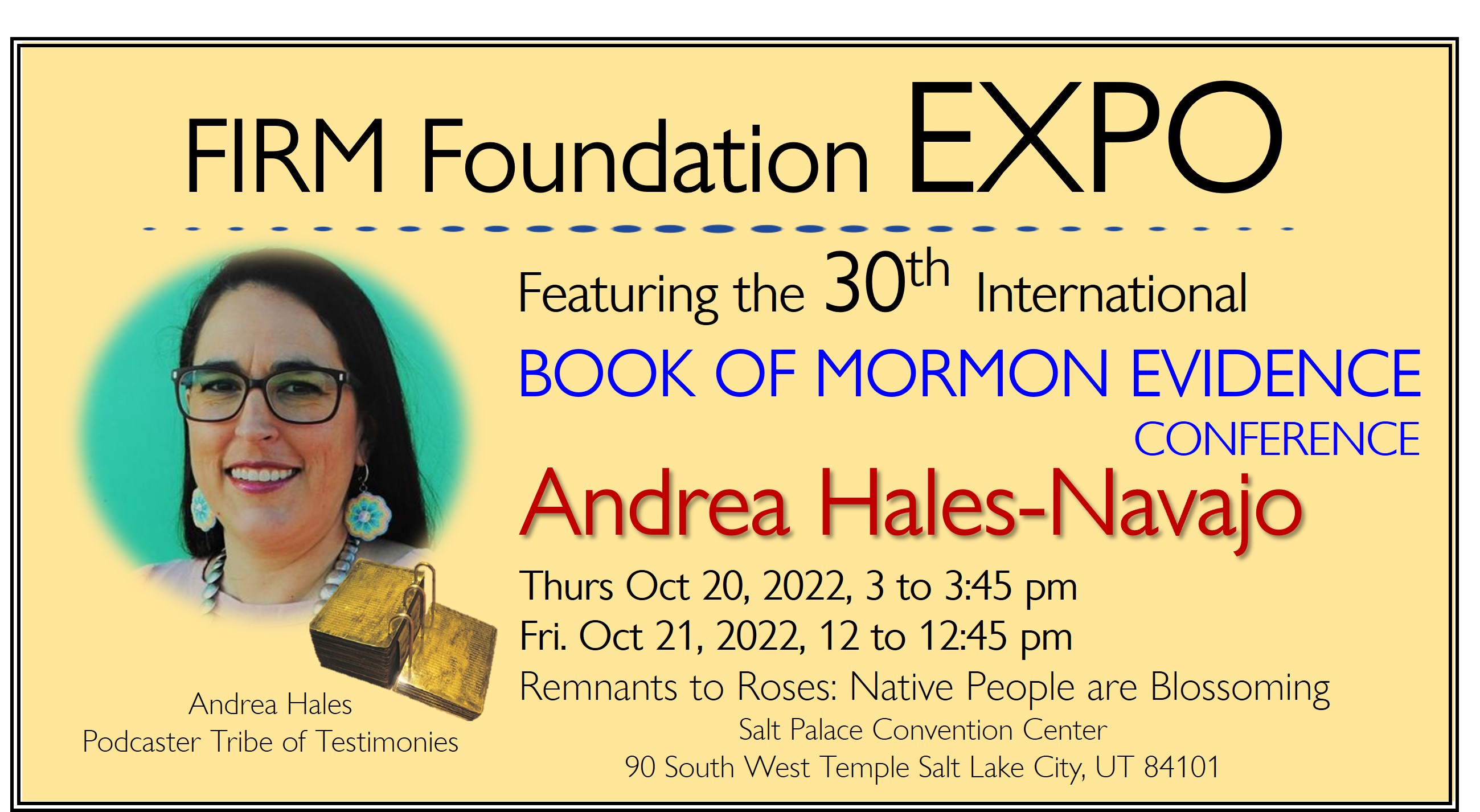“The Prophet Joseph Smith dedicated the Kirtland Temple in 1836. His prayer, which he stated later was a revelation from the Lord, covered many matters, and in it he made this statement:
And cause that the remnants of Jacob, who have been cursed and smitten because of their transgression, be converted from their wild and savage condition to the fulness of the everlasting gospel (D&C 109:65).
“And they [Lamanites], by and by, will receive the gospel. It will be a day of God’s power among them and a nation will be born in a day (Isa. 66:8). The chiefs will be filled with the power of God and will receive the gospel, and they will go forth and build the New Jerusalem, and we shall help them. They are branches of the House of Israel and when the fulness of the Gentiles has come in and the work ceases among them, then it will go in power to the seed of Abraham.” (Wilford Woodruff Journal of Discourses 15:282).
Steven E. Smoot
S. Edgar Smoot, Executive Producer of documentary, The Lost Civilizations of North America, comes revealing new research into Americas ancient civilizations and how history has been handed down to our day. Learn how early men of science, John Wesley Powell and Lewis Henry Morgan changed nearly every aspect of modern society; and why their philosophies matter today. With hundreds of referenced works and thousands of quotes this masterpiece of thought will inspire. 
List of Main Stage Speakers Purchase Tickets
Lost American Antiquities: A Hidden History
“These early men of science understood that by addressing the origin and evolution of man, that it could provide a foundational philosophical base to address a myriad of political, religious and social questions. One of those questions was the continued growth and expansion of Mormonism as they were establishing settlements across the West. Powell and Morgan were both finding in their positions in both government and business, that there were answers in the new evolutionary sciences of ethnology and anthropology, which would make cultures, evolution and origin of man their focus.

The Mormon question was just one of the many issues that could be addressed by redirecting societal views as to the origin of man and the ancient Mound Builders. Besides addressing claims found in the Book of Mormon it would address other looming religious and societal questions, as it would pave the way for a more operative way to liberate society from traditional marriage and oppressive family structures, while creating a whole new morality.
These foundational views into the origin of man would also, be used in the passing of race and Indian legislation, while providing a way for the emancipation of many dogmas of religious belief ’s into the creation of the world as jointly held by Protestant, Catholic and Mormons alike.
In the introduction and cover pages of The Book of Mormon, it states that the book is the abridgment of an ancient record, of a people who are a remnant of the House of Israel. It further states that it was written by way of commandment, and by the spirit of revelation and prophecy, as viewed by its believers to be a record of God’s dealings with the ancient inhabitants of the Americas. It goes on to state that this ancient record was “brought forth from the earth as the voice of a people speaking from the dust, and translated into modern speech by the gift and power of God as attested by divine affirmation.” This ancient record translation was first published in 1830 and asserts that it is another testament of Christ and of his ministries.334
Today, historians of The Church of Jesus Christ of Latter-day Saints affirm that the Church has never taken any official position on the geographical setting of the Book of Mormon. Many of the Church’s faithful believe that the book’s geographical setting was Central and South America, while others believe that it’s setting took place in the heartland of North America.
That having been said, in the late 1800s some antagonists of The Book of Mormon and many faithful believed that the heartland of America and the Mound Builders were, in fact, the setting for the geography of the Book of Mormon, and that the artifacts coming out of the mounds were evidence of its truthfulness. The Book of Mormon tells of a prophet, Lehi, who with his family left Jerusalem to journey by ship, driven by the hand of God, to a land of promise; In an early chapter of The Book of Mormon called First Nephi 2:20 it states: “And inasmuch as ye shall keep my commandments, ye shall prosper, and shall be led to a land of promise; yea, even a land which I have prepared for you; yea a land which is choice above all other lands.”335
Upon arriving at the divinely appointed destination, Lehi referred to this land as a “land of promise,” a chosen and sacred land, a land of liberty. Later, declaring in Second Nephi, chapter one, verse 5-7:
We have obtained a land of promise, a land which is choice above all other lands; a land which the Lord God hath covenanted with me should be a land for the inheritance of my seed. Yea, the Lord hath covenanted this land unto me, and to my children forever, and also all those who should be led out of other countries by the hand of the Lord…Wherefore, this land is consecrated unto him whom he shall bring. And if it so be that they shall serve him according to the commandments, which he hath given, it shall be a land of liberty unto them; wherefore, they shall never be brought down into captivity.336
These promises continue later when Lehi’s son Jacob said:
“Behold, this land, said God, shall be a land of thine inheritance, and the Gentiles shall be blessed upon this land. And this land shall be a land of liberty unto the Gentiles, and there shall be no kings upon this land, who shall raise up unto the Gentiles. And I will fortify this land against all other nations.”
The language used in The Book of Mormon describing the location of the “Promised Land” is both specific as to distance and close as to proximity. The selection of the words, “this land” with “this” being singular as to the land around the speaker, seems to be pointing to a location in close proximity to a land which has been referred to as a land of promise, a choice land, a land of liberty, a land of prosperity and security.
Concurrent with, and subsequent to the publication of The Book of Mormon, Joseph Smith, the founding prophet of The Church of Jesus Christ of Latter-day Saints, was also making some bold statements about the origins of the early inhabitants of this country. In a letter written to John Wentworth (a Chicago newspaper editor) in 1841, Smith wrote; “I was also informed concerning the aboriginal inhabitants of this country, and shown who they were, and from whence they came; a brief sketch of their origin, progress, civilization, laws, governments, of their righteousness and iniquity, and the blessings of God being finally withdrawn from them as a people, was made known unto me…the remnant are the Indians that now inhabit this country.”338 Joseph Smith viewed some of the Indian tribes as a remnant of the House of Israel as spoken of in The Book of Mormon and sent missionaries to teach them. Such proselytizing was a cause for great concern in the region, by government and religious leaders alike. Not only was there concern regarding the alliances that were being made, but also about espousing ideas to the Indians that were contrary to the policy of Manifest Destiny and other social, political and religious agendas of the day.
These missionaries were stating, unequivocally, that the Indians were a remnant of the House of Israel, which implied that they were more than mere savages. They were the descendants of an advanced culture, which implied that they should be viewed differently by American society and should be given rights under the law.

In the summer of 1841, a group of Native Americans from the Sac and Fox tribes had been displaced from their homelands and were living in present-day Iowa. They agreed to cross the Mississippi River to Nauvoo, a Mormon settlement; to visit the Prophet Joseph Smith as described in a recorded meeting in LDS church history. “Thursday, 12—A considerable number of the Sac and Fox Indians have been for several days encamped in the neighborhood of Montrose. The ferryman brought over a great number on the ferryboat and two flat boats for the purpose of visiting me. [Joseph Smith describes] The military band and a detachment of Invincibles [part of the Legion] were on the shore ready to receive and escort them to the grove, but they refused to come on shore until I went down. I accordingly went down, and met Keokuk, Kis-ku-kosh, Appenoose, and about one hundred chiefs and braves of those tribes, with their families. At the landing, I was introduced by Brother Hyrum [Smith] to them; and after salutations, I conducted them to the meeting ground in the grove, and instructed them in many things which the Lord had revealed unto me concerning their fathers, and the promises that were made concerning them in The Book of Mormon. I advised them to cease killing each other and warring with other tribes; also to keep peace with the whites; all of which was interpreted to them. 339
The year before publication of the Squier and Davis report of 1848, the first company of Mormon pioneers entered the valley of the Great Salt Lake as a consequence of being driven out of their homes in Nauvoo, Illinois. This was the beginning of a westward migration of tens of thousands of their faithful into the valley of the Great Salt Lake, where they would establish the headquarters of their expanding settlements.
Chief Moses Keokuk [Kis-ku-kosh] a Sac [Sauk] Indian

However, the concerns of government officials continued regarding the handling of the land claims of the American Indians, since they were being gathered and placed on reservations. At the same time, questions related to who would get title to the lands and homes, which the Mormons left behind were being raised. Both those lands being left behind, as well as those lands that the Mormon pioneers were looking to settle were in question. This and the alliances that were being made between the Mormons and Indians, as Mormons were continually sending missionaries to befriend the Indians, were the cause of much concern for government officials.
At a later date in addressing some of these ongoing concerns, officials found answers in some of the writings and views of Lewis Henry Morgan and John Wesley Powell, as they advanced their ideas regarding stages of human evolution. As we have seen, these theories viewed the American Indian as a savage, at the lowest stage in this evolutionary cycle of development, and saw fundamental religionists as barbaric. These perceptions would be used in establishing political and legal norms that would become the means and justification for the implementation of discriminatory acts and policies that were passed against minority races and religious organizations in the 1800s.
Eastern Tribes of Indians

A word that originated in France in the 1800s is the word “stereotyping.” In advancing public policy and in the preparation for war, the opposition is oftentimes vilified. This tactic that has been used throughout history to increase support for a war effort or for the advancement of race legislation, is a way to stereotype a culture or race so that they would be viewed as evil, crazy or sub-human. In history we have witnessed how the use of denigrating labels have been affixed to a race, culture or a religion, becomes a stigma, that is hard to erase even after many generations.
The Indian tribes of North America have been characterized and stereotyped as being a savage culture, originating from common origins. In our history books Indian tribes are continually characterized as native to America, even though there is ample evidence that shows that the various tribes are greatly different, as they were spread across North America, speaking different languages and living under very different customs.
The images of Indians, in the minds of many, is that of savages running around in loincloths, living in a tent, carrying a tomahawk looking for a scalp. They have seldom been depicted as well clothed with beards, as would be the case with men who would have to survive in cold climates. Nor are they typically depicted harvesting fall crops and living in well laid out and thought-out fortified communities, where they have built giant earthworks and temple mounds for their worship.
Moundville Archaeological Park outside Tuscaloosa, Alabama

Shawnee, Sauk and Algonquin Indians of America’s Heartland


_______________________
334 Book of Mormon, Title Page 335 Book of Mormon, 1 Nephi 2:20. 336 Ibid., 2 Nephi 1:5-11 337 Ibid., 2 Nephi 10:10-12. 338 Joseph Smith, The Personal Writings of Joseph Smith, [Wentworth Letter] compiled and edited by Alma P. Burton [Salt Lake City: Deseret Book., 1977], 275-276 339 See: B. H. Porter, An Everlasting Decree, 101-102: L.D.S. History of the Church 3:34-35, 4:401: see also Teaching of the Prophet Joseph Smith, 122
Steven E. Smoot Lost American Antiquities: A Hidden History Chapter 40
Listen to Andrea Live
Tickets Now! https://www.facebook.com/tribeoftestimonies
https://www.facebook.com/tribeoftestimonies
“The Work Among the Lamanites” Elder Spencer W. Kimball
Of the Council of the Twelve Apostles Conference Report, October 1950, pp. 63-69

“…And then the Prophet Joseph Smith said,
. . . and there (in the Rocky Mountains) they (the Latter-day Saints) will open the door for the establishing the gospel among the Lamanites who will receive the gospel and their endowments and the blessings of God.
And Brother John Taylor said:
. . . the work among the Lamanites must not be postponed if we desire to retain the approval of God.
Oliver Cowdery, even in that early day, had found the Navajos in the far Southwest, and he reported it to the brethren, feeling that it was a very important thing. Then Wilford Woodruff said this further, as he went down into the southwest, in New Mexico, and visited among the Indians there. He said:
“In my short communication of the second inst., I promised to give a fuller account of my visit to the Isletas which I will now endeavor to do.
The Isletas are one of the Pueblo groups down in New Mexico.
I view my visit among the Nephites one of the most interesting missions of my life, although short. I say Nephites, because if there are any Nephites on this continent, we have found them among the Zunis, the Lagunas, and the Isletas, for they are a different race of people, altogether, from the Lamanites. I class the Navajo, Moquis (Hopis) and Apaches with the Lamanites, although they are in advance of many Indian tribes of America. I class the Zunis, Lagunas, and Isletas among the Nephites.

And then he goes on to say, that as soon as they dismissed this particular meeting among the Isletas, and were going to leave, one of the Nephites arose.
. . . full of the spirit of the Lord and said, “Friends, why do you dismiss us and leave us this way? This is the first time we have heard of our forefathers and the gospel and the things we have looked for from the traditions of our fathers. If our wives and children are weary, let them go home. We want to hear more. We want you to talk all night. Do not leave us so.”
Brother Brigham Young said: “It is our duty to feed and teach these Indians.” Let me quote a few lines from him. He advised us to “educate them and teach them the gospel” so that many generations would not pass ere they should become a white and delightsome people (2 Ne. 30:6).
This is the land they and their fathers have walked over, called their own. And they have just as good right to call it theirs today as any children have to call any land their own. They have buried their fathers and mothers and children here. This is their home, and we have taken possession and occupy the land where they used to hunt. Now the game is gone, and they are left to starve… The Lord has given us the ability to cultivate the ground and reap bountiful harvests. We have an abundance of food for ourselves and for the stranger… We are living on their possessions and at their homes.

I should like to quote again from President John Taylor. He said:
The work among the Lamanites must not be postponed if we desire to retain the approval of God. Thus far we have been content simply to baptize them and let them run wild again, but this must continue no longer; the same devoted effort, the same care in instructing, the same organization and priesthood must be introduced and maintained in the House of Lehi as amongst those of Israel gathered from Gentile nations. As yet God has been doing all, and we comparatively nothing. He has led many of them to us, and they have been baptized, and now we must instruct them further and organize them into churches with proper presidencies, attach them to our stakes, organizations, etc., in one word, treat them exactly in these respects as we would and do treat our white brethren.” Spencer W. Kimball Of the Council of the Twelve Apostles Conference Report, October 1950, pp. 63-69







